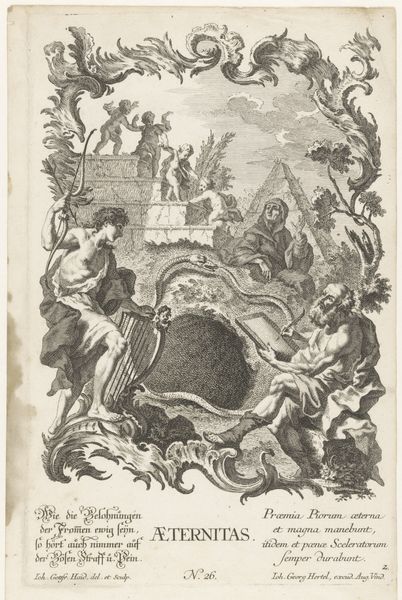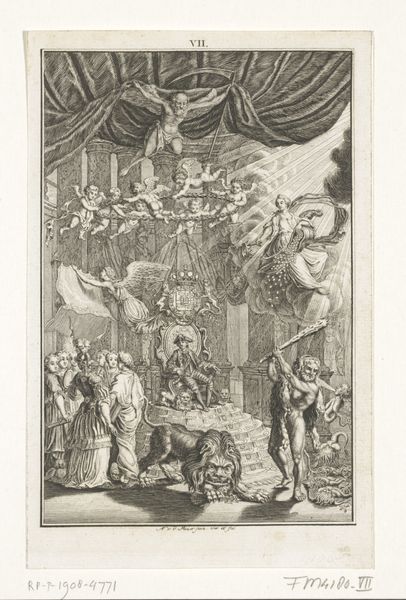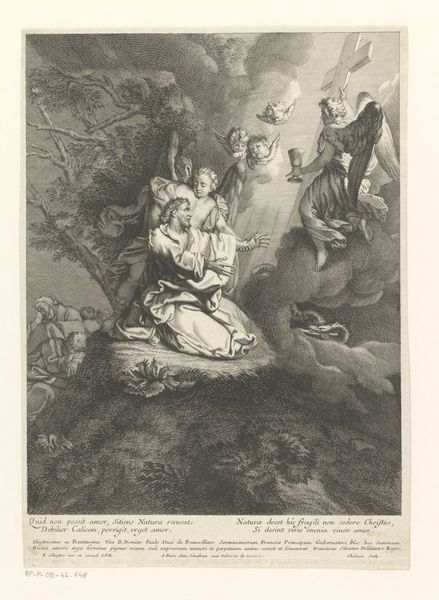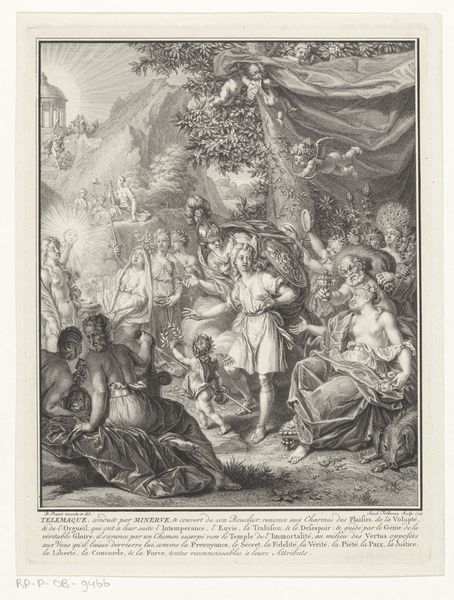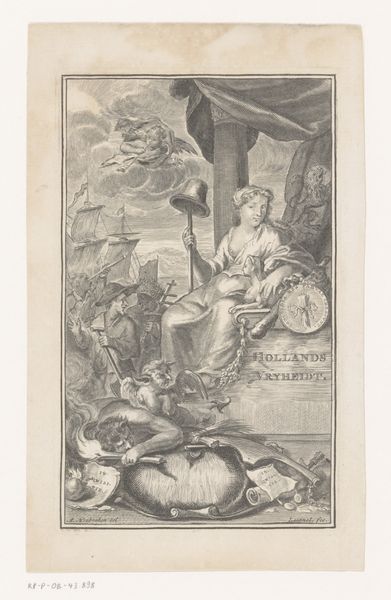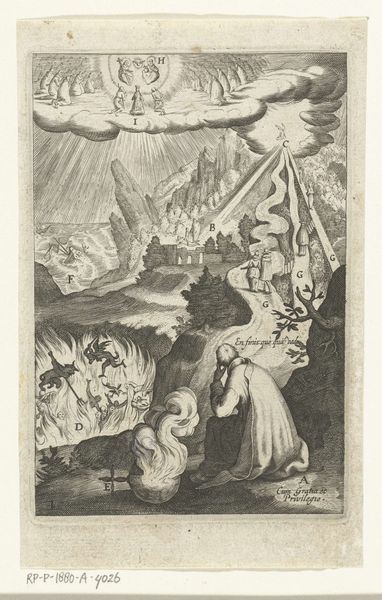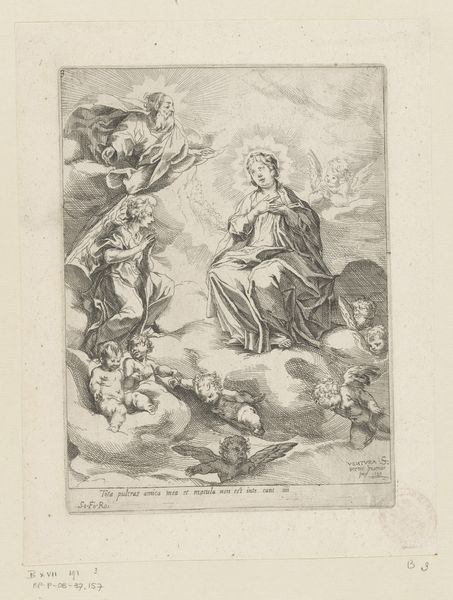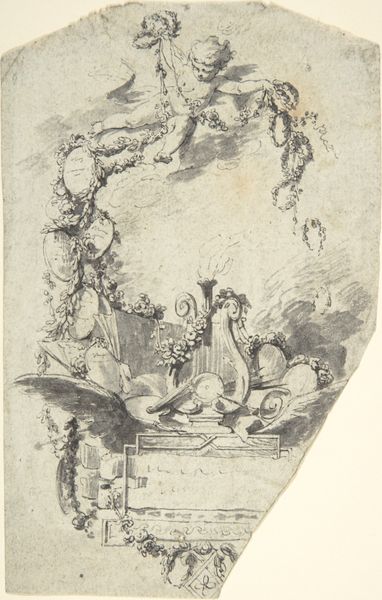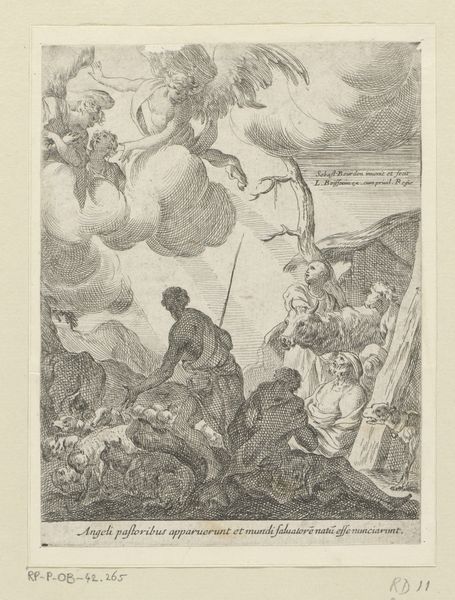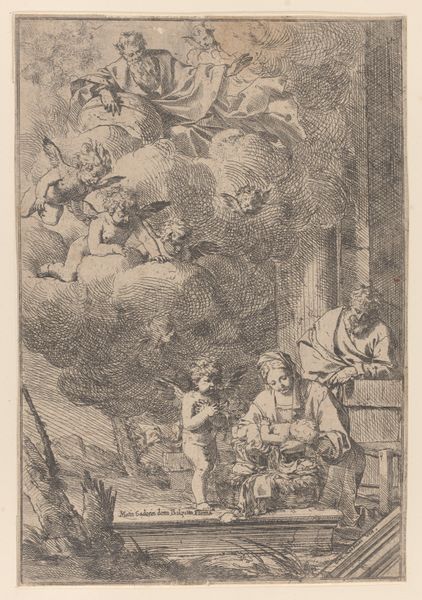
Shakespeare – Sacrificed; or, The Offering to Avarice 1789
0:00
0:00
drawing, print, etching, engraving
#
drawing
#
neoclacissism
# print
#
etching
#
caricature
#
history-painting
#
engraving
Dimensions: image: 18 5/8 x 14 15/16 in. (47.3 x 37.9 cm) plate: 19 13/16 x 15 1/4 in. (50.3 x 38.8 cm) sheet: 21 15/16 x 17 3/8 in. (55.7 x 44.1 cm)
Copyright: Public Domain
Editor: This etching, "Shakespeare – Sacrificed; or, The Offering to Avarice," was created by James Gillray in 1789. There's a definite air of satire and chaos here, with Shakespeare's works seemingly being burned as an offering. What kind of statement do you think Gillray was trying to make? Curator: This piece powerfully critiques the commodification of culture and the "sacrificing" of artistic integrity to monetary gain, which remains profoundly relevant. Note the neoclassical style, popular then, used here ironically to satirize contemporary issues. The "avarice" in the title refers to the driving force behind this sacrifice, implying a critique of capitalism's burgeoning influence on the arts. Editor: I see. It's not just about Shakespeare specifically, but a wider commentary. But who are all those figures around the burning papers? Curator: Exactly. The figures swirling around, are those harmed or made monstrous by greed. The burning of Shakespeare, and more broadly, art, is being performed for these "monsters" that seek capital at the expense of artistry. Editor: That makes the image much more pointed. The act feels more aggressive, less a celebration of neoclassical values, and more like a condemnation. What about that line of text at the very bottom, something that seems to be in Greek? Curator: It does appear to be Greek, further invoking a classist sense that true art can only be appreciated by the learned few. Considering this piece was made during a period of significant social upheaval, where existing systems of power were being challenged and interrogated, it serves as an early commentary on who art should be made by, and whom art should be made for. Editor: So, it is an etching that layers art history and political commentary, arguing for artistic integrity against greed. Thank you for illuminating those aspects. Curator: Of course! It's in seeing art this way - an item made at a moment in a continuous unfolding and exploitation by capitalism - that artworks speak to us now, even after hundreds of years.
Comments
No comments
Be the first to comment and join the conversation on the ultimate creative platform.
